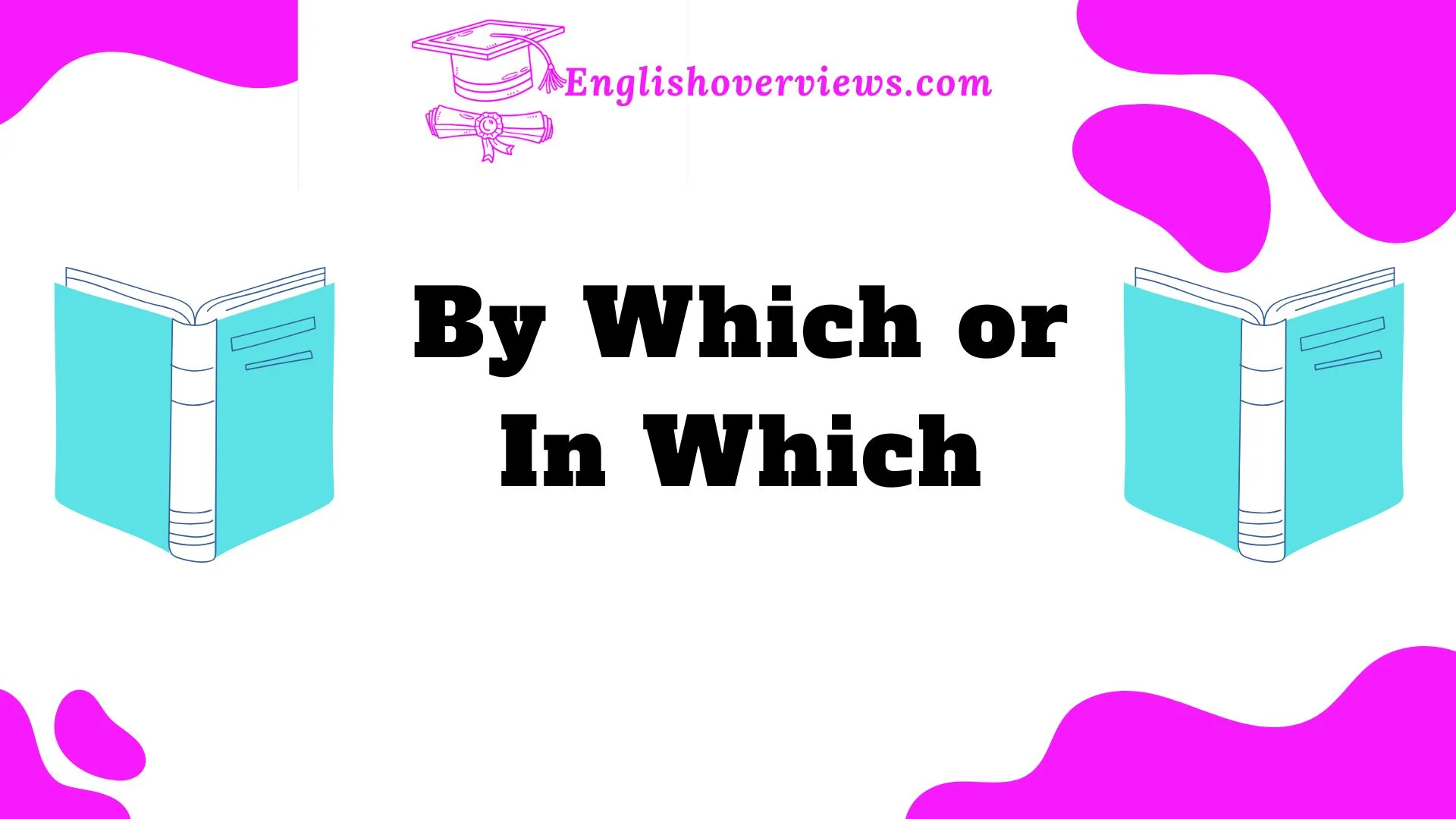Language is a tool for clarity, but some phrases, like “by which” and “in which,” can confuse even the most seasoned writers. These expressions often trip people up due to their specific and sometimes overlapping uses.
Understanding their proper application isn’t just about grammar it’s about ensuring precision and professionalism in your communication. Whether you’re drafting a legal document, crafting academic content, or writing conversationally, knowing when to use these phrases can set your writing apart.
This guide breaks down the complexities, offering real-world examples, comparative insights, and practical tips to help you master these expressions. Let’s dive into the differences and ensure you write with confidence.
Understanding the Basics
What Does “By Which” Mean?
“By which” serves as a relative clause connector and typically explains the means or method by which something happens. It is often used in formal contexts.
Key Characteristics:
- Indicates means or causation.
- Frequently appears in legal and technical writing.
- Provides specificity in describing relationships.
Example:
“The process by which decisions are made is transparent.”
(Here, “by which” indicates the method of decision-making.)
What Does “In Which” Mean?
“In which” functions as a prepositional phrase, referring to location, condition, or circumstance.
Key Characteristics:
- Describes context or situation.
- Often replaces “where” in formal writing.
- Adds clarity in specific descriptions.
Example:
“The scenario in which we find ourselves is unprecedented.”
(Here, “in which” defines the situation or context.)
A Quick Comparison Table
| Phrase | Primary Function | Example | Common Contexts |
| By Which | Indicates means/method | “The law by which we abide…” | Legal, formal writing |
| In Which | Refers to context | “The book in which it is explained…” | Academic, formal writing |
Breaking Down Related Concepts
‘Where’ as Adverb and Conjunction
- Acts as a less formal alternative to “in which.”
- Common in spoken English and casual writing.
Example:
“This is the town where I grew up.”
(Simpler than “the town in which I grew up”.)
‘Wherein’: The Formal Relative Alternative
- Used in legal or academic settings to add gravitas.
- Indicates location or condition.
Example:
“The contract outlines the terms wherein disputes are resolved.”
(“Wherein” replaces “in which” but sounds more formal.)
When to Choose Between Them
- Use “in which” for clarity in formal or academic contexts.
- Opt for “where” in conversational or casual communication.
When and How to Use Them
Practical Applications of ‘By Which’
- Legal Writing:
“The agreement outlines the steps by which compliance is monitored.” - Technical Explanations:
“The mechanism by which the engine operates is complex.” - Causal Connections:
“This is the principle by which we determine success.”
Practical Applications of ‘In Which’
- Academic Writing:
“The study examines the conditions in which these phenomena occur.” - Abstract Concepts:
“The framework in which decisions are evaluated matters.” - Describing Locations:
“The file in which the data is stored has been corrupted.”
When They Overlap
Sometimes, either phrase works depending on tone and style:
- By Which Example: “The process by which we learn evolves.”
- In Which Example: “The situation in which we learn varies.”
Both convey relationships but serve slightly different angles of meaning.
Avoiding Common Errors
Misplacing Relative Clauses
- Incorrect: “The city by which they live is small.”
(“By which” doesn’t make sense here.) - Correct: “The method by which they navigate the city is unique.”
Overusing Archaic Forms
- Avoid overuse of “wherein” unless necessary for tone.
- Instead: “The guidelines in which we operate are clear.”
Confusing Formality Levels
- “In which” adds precision to formal contexts but can feel stiff in casual writing.
Enhancing Clarity in Writing
Placement and Punctuation
Tip: Place “by which” and “in which” close to the nouns they modify.
- Correct: “The strategy in which they succeeded was innovative.”
- Incorrect: “The strategy was innovative, in which they succeeded.”
Parallel Structure
Ensure consistency in lists or clauses:
- “The framework in which they operated and the method by which they succeeded were aligned.”
Real-World Examples
Case Study: Formality in Business Writing
A company drafting policies for new hires:
- Informal: “The way they get onboarded matters.”
- Formal: “The process by which employees are onboarded matters.”
Result: Using “by which” aligns with professional standards.
Real-World Examples and Comparative Usage
Examples in Action
| Sentence | Phrase Used | Explanation |
| “The device by which data is transmitted…” | By Which | Refers to the method of data transmission. |
| “The system in which they work is flexible.” | In Which | Refers to the context of their work system. |
Practical Tips for Choosing the Right Phrase
- Understand the Context: Is it about means (by which) or context (in which)?
- Tailor for Audience:
- Formal: Use “by which” or “in which.”
- Casual: Use “where” or simpler alternatives.
- Test for Clarity: Does it make sense if read aloud?
Tips for Grammar Mastery
Breaking Down Complex Sentences
Simplify by focusing on core ideas:
- Complex: “The terms by which the agreement, which spans several years, is enforced require scrutiny.”
- Simplified: “The terms by which the agreement is enforced require scrutiny.”
Using Tools and Resources
- Grammar checkers like Grammarly can spot misplaced phrases.
- Style guides such as The Chicago Manual of Style clarify formal use.
Practice Exercises
- Rewrite sentences replacing “where” with “in which” or “by which.”
- Compare sentences in formal vs. informal tones.
FAQs
1. Can “by which” and “in which” be used interchangeably?
No, they have distinct uses. “By which” refers to means or method, while “in which” refers to context or location.
2. When should I use “wherein”?
Use “wherein” in legal or formal documents where precision is critical.
3. Is “in which” too formal for everyday use?
It depends on the audience. In casual settings, “where” might feel more natural.
4. How can I avoid ambiguity?
Ensure phrases like “by which” or “in which” are placed near the nouns they modify.
5. Are there simpler alternatives?
Yes. Use “how” for “by which” and “where” for “in which” in informal contexts.
Conclusion: Mastering the Art of Precision in Language
Understanding the proper use of “by which” and “in which” is a game-changer for anyone striving to communicate clearly and effectively. These phrases, while seemingly small, can make a significant difference in how your ideas are perceived, especially in formal or professional contexts.

Alyan Ashraf is the creative mind behind English Overviews, a platform dedicated to helping learners master the English language. Passionate about education and language development, Alyan specializes in simplifying complex English concepts, making learning accessible for students of all levels.











